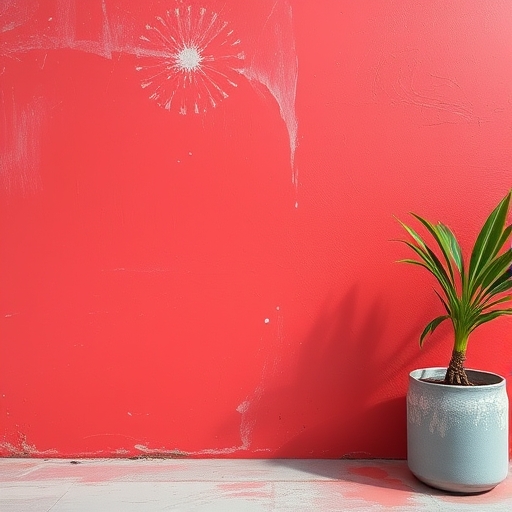How Long Before Second Coat of Paint: A Comprehensive Guide
Painting is one of the most effective ways to refresh your home or office space. However, achieving a smooth, professional finish requires more than just slapping on a coat of paint; the timing between coats is crucial. In this article, we’ll explore how long you should wait before applying a second coat of paint, factors influencing drying time, and tips for achieving the best results.
Understanding Paint Drying and Curing
Before we dive into the specifics of timing, it’s essential to understand the difference between drying and curing.
Drying vs. Curing
- Drying: This refers to the time it takes for the paint to be dry to the touch. At this stage, you can generally apply a second coat, but the paint has not fully hardened.
- Curing: This is the process where the paint reaches its maximum hardness and durability. Curing can take several days to weeks, depending on the paint type and environmental conditions.
- Latex Paint: Generally dries to the touch in 1-2 hours and can be recoated after 4-6 hours.
- Oil-Based Paint: Takes longer, usually dries to the touch in 6-8 hours, with a recommended wait of 24 hours before applying a second coat.
- Temperature: Higher temperatures can speed up drying time, while lower temperatures can slow it down.
- Humidity: High humidity levels can extend drying times. Ideally, you want to paint in environments with 40-70% humidity.
- Air Circulation: Good airflow can help paint dry faster. Use fans or open windows to improve ventilation.
- Porous Surfaces: Materials like drywall or wood may absorb paint and dry more quickly.
- Non-Porous Surfaces: Surfaces such as metal or glass may take longer for paint to adhere and dry.
Factors Influencing Drying Time
Several factors can impact how long you should wait before applying a second coat of paint. Understanding these can help you achieve the best results.
1. Type of Paint
Different types of paint have varying drying times:
2. Environmental Conditions
3. Surface Type
The surface you are painting can also affect drying time. For instance:
4. Paint Thickness
Applying a thicker coat of paint will require a longer drying time. It’s essential to apply paint evenly and avoid overloading your brush or roller.
General Guidelines for Recoating
Here are some general guidelines for how long to wait before applying a second coat of paint based on paint type:
| Paint Type | Dry to Touch | Recoat Time |
|---|---|---|
| Latex Paint | 1-2 hours | 4-6 hours |
| Oil-Based Paint | 6-8 hours | 24 hours |
| Chalk Paint | 1-2 hours | 2-4 hours |
| Spray Paint | 30 minutes | 1-2 hours |
Tips for Applying a Second Coat
To ensure a smooth and even finish, consider the following tips when applying your second coat:
1. Use Quality Tools
Invest in high-quality brushes, rollers, and trays. The right tools can make a significant difference in the final appearance of your paint job.
2. Mix the Paint
Before applying a second coat, stir the paint thoroughly to ensure an even color and consistency. This is especially important for latex paints, which can separate over time.
3. Check for Imperfections
Before applying the second coat, inspect your first coat for any imperfections, such as drips or uneven coverage. Sanding down these areas can help achieve a smoother finish.
4. Maintain a Wet Edge
When applying the second coat, try to maintain a “wet edge” by overlapping your strokes. This helps prevent lap marks and ensures a uniform appearance.
Frequently Asked Questions (FAQs)
How can I tell if the first coat is dry enough for a second coat?
You can test if the first coat is dry by lightly touching an inconspicuous area. If it feels dry to the touch and you don’t see any paint coming off on your finger, it’s likely ready for a second coat.
Can I speed up the drying process?
While patience is essential, you can speed up drying times by improving air circulation, using a fan, or raising the temperature in the room. However, avoid direct heat sources like hairdryers, which can cause the paint to crack.
What happens if I apply a second coat too soon?
Applying a second coat too soon can lead to issues such as peeling, bubbling, or an uneven finish. It can also prolong the overall drying and curing time.
Is it necessary to sand between coats?
While not always necessary, sanding between coats can help improve adhesion and create a smoother finish. Use fine-grit sandpaper and lightly sand the surface before applying the second coat.
Conclusion
Knowing how long to wait before applying a second coat of paint is crucial for achieving a professional-looking finish. Factors such as paint type, environmental conditions, and surface type all play a significant role in determining drying times. By following the guidelines outlined in this article, you can ensure that your painting project goes smoothly and yields excellent results. Remember to be patient, use quality materials, and take the time to prepare your surfaces properly for the best outcome. Happy painting!

